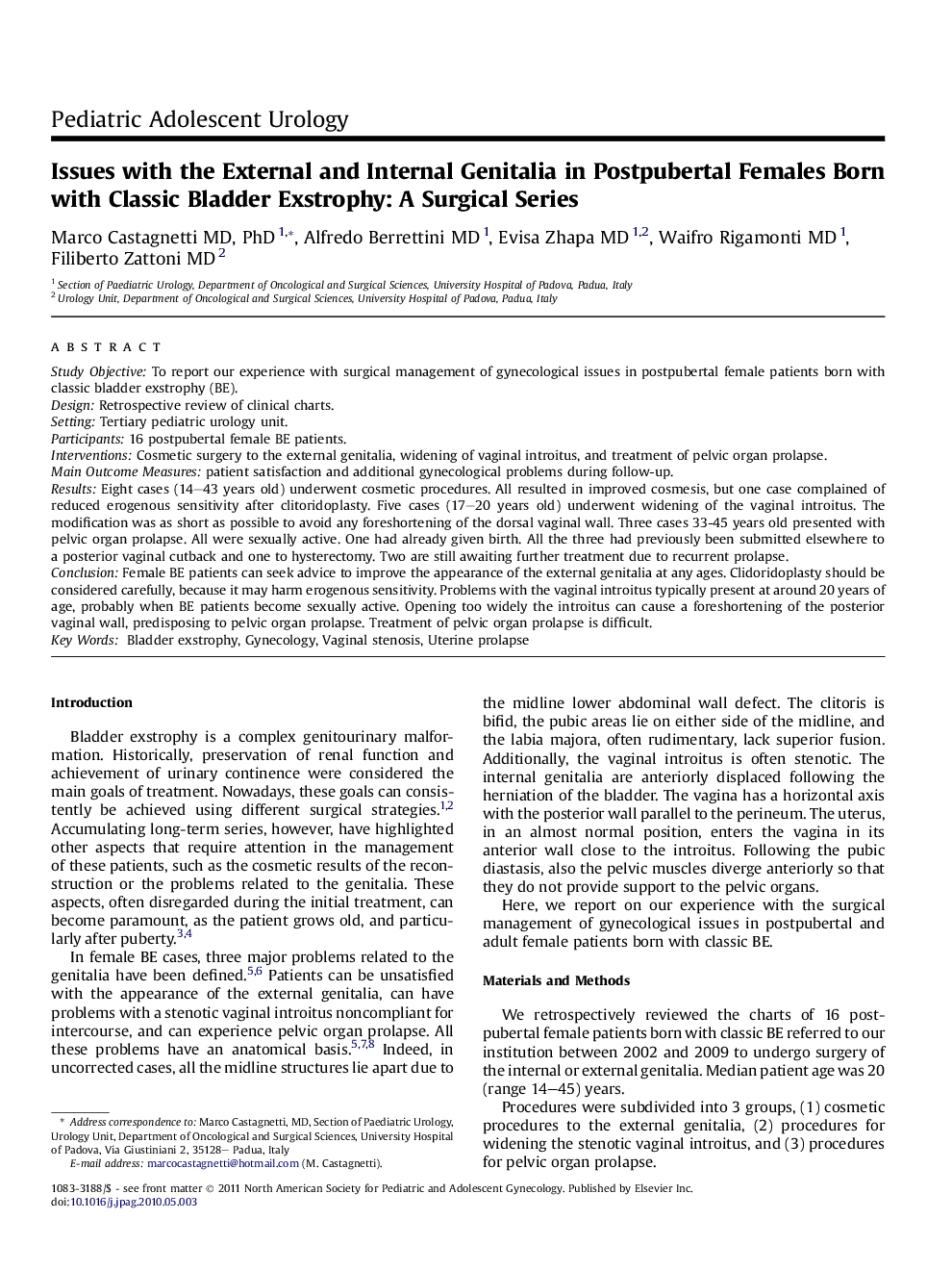| Article ID | Journal | Published Year | Pages | File Type |
|---|---|---|---|---|
| 3961864 | Journal of Pediatric and Adolescent Gynecology | 2011 | 5 Pages |
Study ObjectiveTo report our experience with surgical management of gynecological issues in postpubertal female patients born with classic bladder exstrophy (BE).DesignRetrospective review of clinical charts.SettingTertiary pediatric urology unit.Participants16 postpubertal female BE patients.InterventionsCosmetic surgery to the external genitalia, widening of vaginal introitus, and treatment of pelvic organ prolapse.Main Outcome Measurespatient satisfaction and additional gynecological problems during follow-up.ResultsEight cases (14–43 years old) underwent cosmetic procedures. All resulted in improved cosmesis, but one case complained of reduced erogenous sensitivity after clitoridoplasty. Five cases (17–20 years old) underwent widening of the vaginal introitus. The modification was as short as possible to avoid any foreshortening of the dorsal vaginal wall. Three cases 33-45 years old presented with pelvic organ prolapse. All were sexually active. One had already given birth. All the three had previously been submitted elsewhere to a posterior vaginal cutback and one to hysterectomy. Two are still awaiting further treatment due to recurrent prolapse.ConclusionFemale BE patients can seek advice to improve the appearance of the external genitalia at any ages. Clidoridoplasty should be considered carefully, because it may harm erogenous sensitivity. Problems with the vaginal introitus typically present at around 20 years of age, probably when BE patients become sexually active. Opening too widely the introitus can cause a foreshortening of the posterior vaginal wall, predisposing to pelvic organ prolapse. Treatment of pelvic organ prolapse is difficult.
